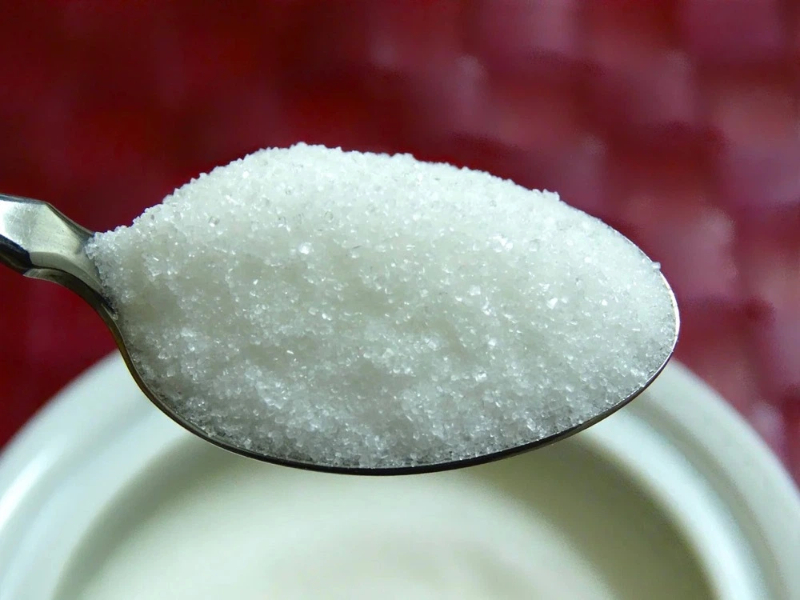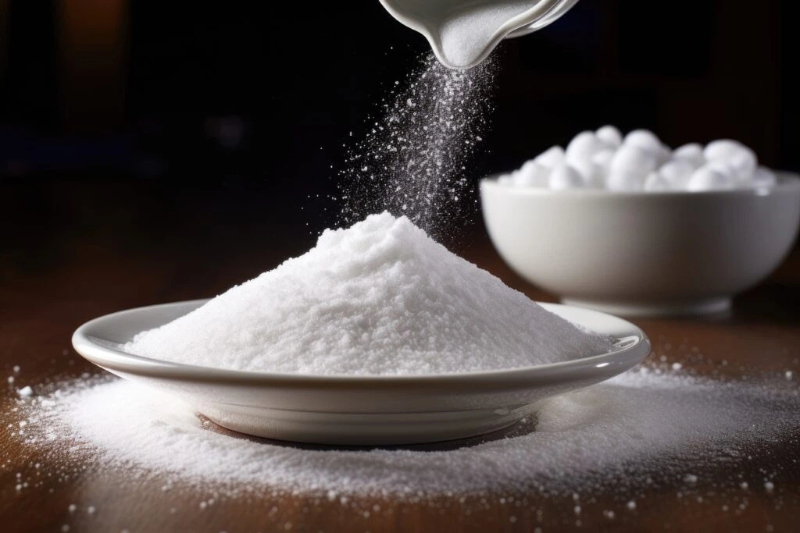







Content Menu
● Stevia Foundations and Practical Applications
● Aspartame—Profile, Use Cases, and Regulatory Context
● Is There Aspartame in Stevia?
● Blending Strategies for Balanced Sweetness
● Regulatory and Labeling Considerations for Overseas Manufacturing
● Your Factory—Capabilities That Support Global Brands
● Practical Product Development Guidelines
● Case Studies and Applications
● Sustainability and Clean-Label Trends
● FAQ
>> 1. Is Aspartame safe for all consumers?
>> 2. Can stevia and Aspartame be used together in the same product?
>> 3. What are the key considerations for heat-processed foods?
>> 4. How should overseas manufacturers approach labeling?
>> 5. What services does your factory offer to overseas brands?
In today's global food and beverage landscape, sweeteners play a pivotal role in delivering taste, texture, and consumer satisfaction while supporting healthier dietary choices. Two of the most widely discussed options are stevia-derived sweeteners and Aspartame. Stevia offers a plant-based, zero-calorie alternative that aligns with clean-label trends, whereas Aspartame provides a high-intensity, sugar-like sweetness with long-standing regulatory approvals in many markets. This article examines the coexistence of these options, clarifies common misconceptions, and highlights how a China-based manufacturer specializing in natural sweeteners, functional polyols, and dietary fibers can help overseas brands achieve compliant, blended-sweetener solutions. The discussion includes blended-sweetener development, tablet production, and OEM/ODM services—capabilities your facility can leverage to meet diverse regulatory and consumer requirements.

Stevia, derived from Stevia rebaudiana, contains steviol glycosides that are intensely sweet yet contribute minimal calories. The core appeal lies in its natural origin, with many jurisdictions granting GRAS or similar status for purified steviol glycosides, while restricting crude stevia leaf formulations. For product developers, key considerations include taste profile, aftertaste management, and process stability. High-purity steviol glycosides often deliver a clean sweetness but can exhibit lingering aftertastes at higher concentrations; this drives interest in blending strategies to achieve sugar-like fullness without compromising clean-label positioning. When used in beverages, dairy, bakery fillings, or confectionery, stevia-based systems frequently benefit from synergistic blends with other non-nutritive sweeteners or sugar substitutes to balance mouthfeel, sweetness onset, and aftertaste. Visuals accompanying this section could include a schematic of steviol glycoside pathways, sensory profiling charts, and imagery of stevia leaves alongside finished products.
Aspartame is a low-calorie, high-intensity sweetener created through the combination of two amino acids, phenylalanine and aspartic acid. It mimics sucrose closely in sweetness intensity but is significantly sweeter, enabling product formulators to reduce total caloric load. Its regulatory history spans decades, with approvals in many major markets and ongoing evaluations by food safety authorities. Important considerations for manufacturers include stability under heat and acid conditions, labeling requirements, and population-specific cautions (such as phenylketonuria considerations in certain regulatory environments). In practice, Aspartame is valued for its clean sugar-like sweetness and consistent sensory performance, making it a staple in tabletop sweeteners, beverages, and many low-calorie formulations. Visuals for this section could feature a timeline of regulatory milestones and a comparative chart of sweetness intensity and stability versus other high-intensity sweeteners.
Core clarification: Stevia-derived ingredients and Aspartame are distinct in origin and composition. Stevia products rely on steviol glycosides extracted from the plant, while Aspartame is an artificially synthesized amino acid dipeptide. There is no inherent overlap in chemical composition between steviol glycosides and Aspartame. However, the market sometimes features blended-sweetener systems that combine stevia with other sweeteners, including Aspartame, to achieve specific taste profiles, cost targets, or regulatory approvals that vary by region. For overseas manufacturers, it is crucial to understand local labeling requirements. In many markets, blends containing Aspartame may necessitate explicit declarations, while pure steviol glycoside formulations could require labeling that reflects the natural origin and any added ingredients. The takeaway is clear: Stevia-based sweeteners do not inherently contain Aspartame, but formulations and blends may include Aspartame depending on regulatory allowances and product strategy.
Formulators often pursue blends to balance aroma, sweetness onset, mouthfeel, and aftertaste. When Aspartame is considered in a blend with stevia, designers focus on mitigating bitter aftertastes, optimizing sweetness potency, and ensuring stability across processing conditions. Key strategies include:
- Combining steviol glycosides with compatible non-nutritive sweeteners (which may include Aspartame in certain regions) to broaden the sweetness spectrum and reduce aftertaste.
- Employing taste-modulating ingredients such as flavor enhancers, bulking agents, or encapsulation technologies to preserve sweetness while maintaining clean-label perceptions.
- Customizing blends for specific categories: carbonated beverages may require rapid sweetness onset and stable foam characteristics; dairy products demand heat stability and mouthfeel; baked goods require thermal resilience and crumb structure maintenance.
Visuals for this section could illustrate a decision tree for selecting base sweeteners, a schematic of encapsulation approaches, and example formulations across product categories.

Regulatory environments differ widely across markets, shaping how stevia and Aspartame can be used and labeled. Manufacturers should map the regulatory status of steviol glycosides and Aspartame in their target regions, including permissible concentrations, approved uses, and disclosure requirements. In some jurisdictions, products containing Aspartame require explicit "Contains phenylalanine" statements or allergen-like warnings, particularly for consumers with phenylketonuria. Steviol glycosides may be permitted as food additives or ingredients, with labeling reflecting the natural or purified status of the extract. For overseas brands seeking to import, contract manufacturing partners should provide detailed documentation packages—ingredient specifications, COAs, compliance certificates, and full traceability. Visuals could include regulatory landscape icons by region and a sample labeling schematic showing compliant language.
Your China-based facility specializes in natural sweeteners, functional polyols, and dietary fibers, with service offerings including blended-sweetener development, tablet production, and OEM/ODM solutions for overseas manufacturers. The value proposition centers on end-to-end support: concept design, ingredient selection, formulation optimization, sensory evaluation, scale-up, quality assurance, regulatory documentation, and scalable manufacturing. Emphasis on quality controls, GMP, HACCP, and ISO certifications helps reassure international partners about safety and consistency. Visuals could include a flowchart of the development-to-production pipeline and images of blending operations, tablet presses, and QC labs.
For teams developing products that may feature Stevia, Aspartame, or blends thereof, consider this practical checklist:
- Define target sweetness level, caloric contribution, and regulatory constraints for each market.
- Choose a base sweetener (steviol glycosides, Aspartame, or alternatives) and design a blended system that aligns with taste targets and clean-label expectations.
- Assess processing conditions (heat, pH, storage) to ensure compatibility and stability of the chosen sweetener matrix.
- Plan for labeling and consumer education, especially in markets with strict disclosures around Aspartame and phenylalanine content.
- Establish a sensory evaluation protocol to quantify sweetness, aftertaste, mouthfeel, and overall acceptance.
- Develop a robust QA program that covers raw material qualification, in-process controls, finished product testing, and supplier audits.
Visuals might include sensory scoring sheets, stability test graphs, and a product development timeline.
To illustrate practical outcomes, present anonymized case studies where overseas brands collaborated with a blended-sweetener developer to create product lines that met regional regulations while delivering preferred taste profiles. Include data on sweetness intensity, consumer acceptance, processing efficiency, and regulatory compliance outcomes. Visuals could include before-and-after taste results, pilot batch photographs, and consumer panel summaries.
As consumer awareness grows, sustainability considerations influence sweetener choice—from agricultural inputs to processing energy and waste management. Stevia-based systems can align with plant-derived commodity supply chains, while Aspartame's production footprint invites scrutiny in some markets. Emphasize your factory's commitment to responsible sourcing, efficient processing, and transparent documentation to support brand integrity in global markets. Visuals could include supply-chain maps and lifecycle diagrams.
Is Aspartame in Stevia? The direct answer is no—the two are distinct in origin, chemistry, and regulatory handling. Yet, in practice, blended-sweetener formulations may incorporate Aspartame in certain regions to achieve specific taste and cost targets, underscoring the importance of regional regulatory awareness and clear labeling. Your factory's core strengths—natural sweeteners, functional polyols, dietary fibers, and end-to-end services for overseas manufacturers—position you to deliver tailored, compliant, and scalable sweetener solutions. By combining rigorous quality control, flexible scale-up capabilities, and a customer-centric approach to blended-sweetener development, tablet production, and OEM/ODM services, the company can help global brands meet diverse market demands while preserving product integrity and consumer trust. This integrated approach supports innovation, regulatory compliance, and sustainability across markets.

Aspartame safety has been evaluated by major health authorities within established intake limits; however, individuals with phenylketonuria must avoid it, and labeling requirements vary by market.[4]
They can be used together where permitted by regulation and consumer acceptance; in many cases, stevia alone or stevia-based blends with other non-caloric sweeteners are preferred to avoid regulatory or perception issues.[4]
Aspartame is less heat-stable than certain steviol glycosides, so formulations often rely on protective strategies or alternate sweeteners for baked goods and hot beverages.[4]
Labeling depends on the target market; products containing Aspartame may require explicit disclosures, while stevia-derived ingredients may have different labeling rules; align with local regulatory guidelines.[4]
Blended-sweetener development, tablet production, and OEM/ODM services, plus comprehensive QA/QC, documentation, and scale-up support for global markets.[10][11]
[1](https://betterme.world/articles/stevia-vs-aspartame/)
[2](https://oobli.com/blogs/news/stevia-vs-aspartame-vs-sucralose)
[3](https://www.health.harvard.edu/blog/sweeteners-time-to-rethink-your-choices-2019022215967)
[4](https://www.fda.gov/food/food-additives-petitions/aspartame-and-other-sweeteners-food)
[5](https://www.mayoclinic.org/healthy-lifestyle/nutrition-and-healthy-eating/in-depth/artificial-sweeteners/art-20046936)
[6](https://zanducare.com/blogs/exploring-ayurveda/stevia-vs-aspartame)
[7](https://www.nationalgeographic.com/health/article/sugar-substitutes-health-effects)
[8](https://www.goodrx.com/well-being/diet-nutrition/stevia-bad-for-you)
[9](https://pmc.ncbi.nlm.nih.gov/articles/PMC2900484/)
[10](https://pyureorganic.com/blogs/news/stevia-vs-aspartame-differences)
[11](https://money.finance.sina.com.cn/corp/view/vCB_AllBulletinDetail.php?stockid=002286&id=10970144)
